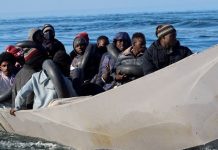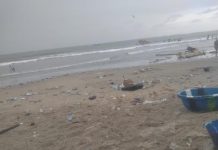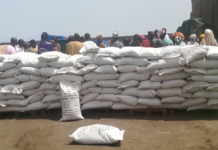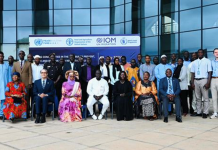By Madiba Singhateh
Research has indicated that Plastic Pollution and Ghost nets are becoming a serious threat to Marine species including turtles and fish.
These threats, coupled with Illegal Unreported Unregulated fishing has added more weight on the Ocean species.
It has further been shown that most plastics are made from Nylon and can travel a long distance once it’s lost.
Ghost nets, plastic pollution and Illegal, Unreported, Unregulated fishing create havoc on the Gambian Fishing Industry causing additional destruction to aquatic resources.
According to Geo News ,Recent figures from World WildLife Fund (WWF) indicate that between 500 000 and one million tons of ghost fishing equipment are abandoned in the ocean each year.
“Ghost nets are lost, abandoned or discarded fishing gear left by fishermen. The proliferation of discarded ghost nets is a major issue for marine life and sea habitats, as well as the commercial fishing industry and marine vessels themselves.
Mr Omar Sanyang, co-founder and the Executive Director Smile For Life, said ghost nets are threats to marine species and can harm them in different ways.
He said Smile for Life is a non-governmental organization (NGO)and founding members of the West African Sea Turtle Conservation Network, that works to protect sea turtles in The Gambia and beyond to raise awareness among local people about the importance and threats of sea turtles, and encourage them to participate in conservation efforts.
He said they also work with fishermen to reduce the accidental capture of sea turtles in fishing nets, and to release them safely if they are caught in their By-Catch Programs.
Sanyang, said turtles may mistake plastic for food and swallow it, causing intestinal blockage, internal injury, malnutrition, or death(Indigestion ).
” Sometimes, they get trapped in plastic debris, such as fishing nets which reduce mobility leading to drowning.
“To protect marine turtles from plastic pollution and ghost nets, we need to reduce the production and consumption of single-use plastics, improve waste management and recycling systems, promote the use of biodegradable or alternative materials, and support the removal and disposal of ghost nets and other marine debris,” he added.
We also need to raise awareness and educate the public about the impacts of plastic pollution and ghost nets on marine turtles and the environment,” he said.
Mr Ahmed Manjang, a Marine Biologist, said these abandoned nets have effects on marine sea turtles .
He said if they find these dead turtles, they look at the composition they are in and then take measurements of its length and width to see possible marks and what might be the possible cause of death whether it is entangled with fishing nets or rope or propeller .
According to Manjang, the majority of them are entangled in catches by the fishermen or abandoned fish nets that are scattered.
He said this is a big problem; adding that in The Gambia there are six different species of turtles, but the most prominent among them is the Green turtle and some time ago, they saw one dead green turtle washed in the sea of Tanji.
So the leather bag turtle’s main food is jellyfish and fish eggs and they keep their population in check by feeding on them.
If the leather bag turtle population is decreasing the population of the jellyfish will increase that means they feed on more fish eggs and babies.
Plastic and jellyfish look alike when they are in the ocean the turtle feeds on them thinking that they are jellyfish.
“We personally try to work with one group to clean the beach from discarded waste and abandoned nets,but once we pick them we know that we cannot take them to normal landfill sites.
Burning might be the easy way, but burning also causes smoke pollution. The impacts of ghost nets are seen everyday on marine sea turtles and other fish as well,” he said.
Speaking further he said one of the impacts from trawlers is that they destroy livelihoods especially that of women fishmongers.
Who pre-finance some of the boat with nets and logistics to go to sea , but due to unforeseen circumstances, the trawlers and ships destroy their nets and later send them out of business, hence they cannot secure bank loan and are not affiliated to the Chinese who gives loans only to Senegalese fishing boats .
So what they do now is to help other fisher folks in order to make ends meet.
“The fishing trawlers are not only discarding nets but also fish along shore, nothing less than 9 nautical miles and destroying artisanal fishers nets,” he said.
Attempts to speak to the Communication Officer at the Ministry of Fisheries and Water Resources to know whether there are any plans or programs at the Ministry focusing on the abandoning of nets and IUU proved futile.






















